DREW WILEY
Member
- Joined
- Jul 14, 2011
- Messages
- 13,932
- Format
- 8x10 Format
Yeah... probably forgot where I was posting. ... and should count my blessings ... namely, be grateful Avedon didn't get his hands on a Holga.
Yeah... probably forgot where I was posting. ...
But damn ugly prints indeed.
Serious heart inflammations hindered Avedons health in 1974.[15] The troubling time inspired Avedon to create a compelling collection from a new perspective. In 1979, Avedon was commissioned by Mitchell A. Wilder (1913-1979), the director of the Amon Carter Museum to complete the Western Project.[16] Wilder envisioned the project to portray Avedons take on the American West. It became a turning point in Avedons career when he focused on everyday working class subjects such as miners soiled in their work clothes, housewives, farmers and drifters on larger-than-life prints instead of a more traditional options with famous public figures or with the openness and grandeur of the West.[17] The project itself lasted five years concluding with an exhibition and a catalogue. It allowed Avedon and his crew to photograph 762 people and expose approximately 17, 000 sheets of 8 x 10 Tri-X Pan film.[17][18] The collection identified a story within his subjects of their innermost self, a connection Avedon admits would not have happened if his new sense of mortality through severe heart conditions and aging hadnt occurred.[15] Avedon visited and traveled through state fair rodeos, carnivals, coal mines, oil fields, slaughter houses and prisons to find the right subjects to reveal.[17] In 1994, Avedon revisited his subjects who would later on open up about the In the American West aftermath and its direct effects. Billy Mudd, who was a trucker, went long periods of time on his own away from his family. He was a depressed, disconnected and lonely man before Avedon offered him the chance to be photographed. When he saw his portrait for the first time, Mudd saw that Avedon was able to reveal Mudds true-self and recognized the need for change in his life. The portrait transformed Billy, and led him to quit his job and return to his family. Helen Whitneys 1996 American Masters Avedon: Darkness and Light documentary depicts an aging Avedon photographer identifying In the American West as his best body of work.[15] The project was embedded with Avedons goal to discover new dimensions within himself, from a Jewish photographer from out East who celebrated the lives of famous public figures to an aging man at one of the last chapters of his life to discovering the inner-worlds, and untold stories of his Western rural subjects. During the production period Avedon encountered problems with size availability for quality printing paper. While he experimented with platinum printing he eventually settled on Portriga Rapid, a double-weight, fiber-based gelatin silver paper manufactured by Agfa-Gevaert. Each print required meticulous work, with an average of thirty to forty manipulations. Two exhibition sets of In the American West were printed as artist proofs, one set to remain at the Carter after the exhibition there, and the other, property of the artist, to travel to the subsequent six venues. Overall, the printing took nine months: about 68, 000 square feet of paper were consumed in the process.[17]
While In the American West is one of the Avedons most notable works, it has often been criticized for falsifying the West through voyeuristic themes and for exploiting his subjects. Critics question why a photographer from the East who traditionally focuses on models or public figures would go out West to capture the working class members who represent hardship and suffering. They argue that Avedon's intentions are to influence and evoke condescending emotions from the audience such as pity while studying the portraits
You can get beautiful grain from many modern day black and white roll films. 'Modern' technologies such as drum scanning and archival inkjet processes like piezography are capable of producing exquisite prints - just ask Bill Brandt's nephew. While your own personal experience with Photoshop may be limited to pushing buttons removing lint and catbarf many talented photographers have mastered modern techniques to produce beautiful works of art.Fatso & kindred spirits: Grain is one thing, beautiful grain another. I gave up on that line of thinking when Agfachrome 1000 was discontinued.
Talk about lovely grain! It was avail in 120 film too. But at a certain level of magnification, grain becomes mush, and then you have to back
way off to view things coherently. Now people just hit the pseudo-grain simulation button, fingerprint & lint app, sratchmark app, catbarf app,
whatever.
And what kind of moron would judge a 40x60 at a foot distance?
The problem is you have many people who go to museums and look at gigantic murals painted in the Renaissance. They are used to seeing more and more detail as they approach a 10 foot by 30 foot painting. They are simply not cultured enough to realize you can't do that with handheld 35mm shots blown up to 40"X60".
It isn't meaningful to discuss viewing distance without more context. If it's for display on a billboard or the side of a building 50' up, that's one thing. If it's for a gallery display can be reasonably expected to get as close as possible and expect to see more detail.
Not all "great" paintings have great detail, me thinks you are seriously over generalizing.
Also when did it become the audience's job to become cultured enough to look at a photo?

To be honest on most of my photos in on way or another I try to limit detail, for example by say using B&W materials among other tools..
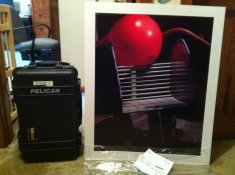
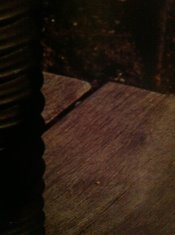
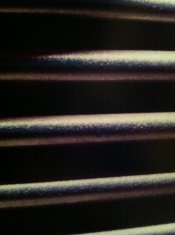
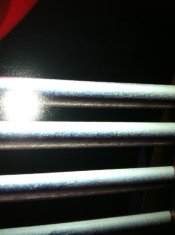
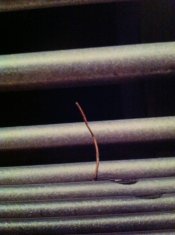
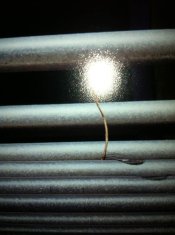
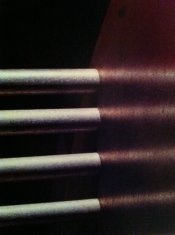
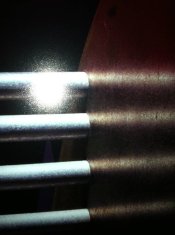
Let the viewers judge.
That's an odd way of limiting detail. B&W film tends to be finer grain and have higher resolution... perfect for recording detail.
One enduring description of B&W is that it is "timeless". IMO part of the reason for that is that the detail of color is omitted.That's an odd way of limiting detail. B&W film tends to be finer grain and have higher resolution... perfect for recording detail.
Only half my brain agrees with you, Mark.... namely the half that I use when taking and printing black and white. But within seconds I can switch gears and think in a color mode which can be just as "timeless". I think you have a very limited perspective of what color is capable of,
perhaps based on unworthy stereotypes. I think the drawings in Lascaux about as timeless as manmade images can be. ... they used color didn't they?
| Photrio.com contains affiliate links to products. We may receive a commission for purchases made through these links. To read our full affiliate disclosure statement please click Here. |
PHOTRIO PARTNERS EQUALLY FUNDING OUR COMMUNITY:  |


